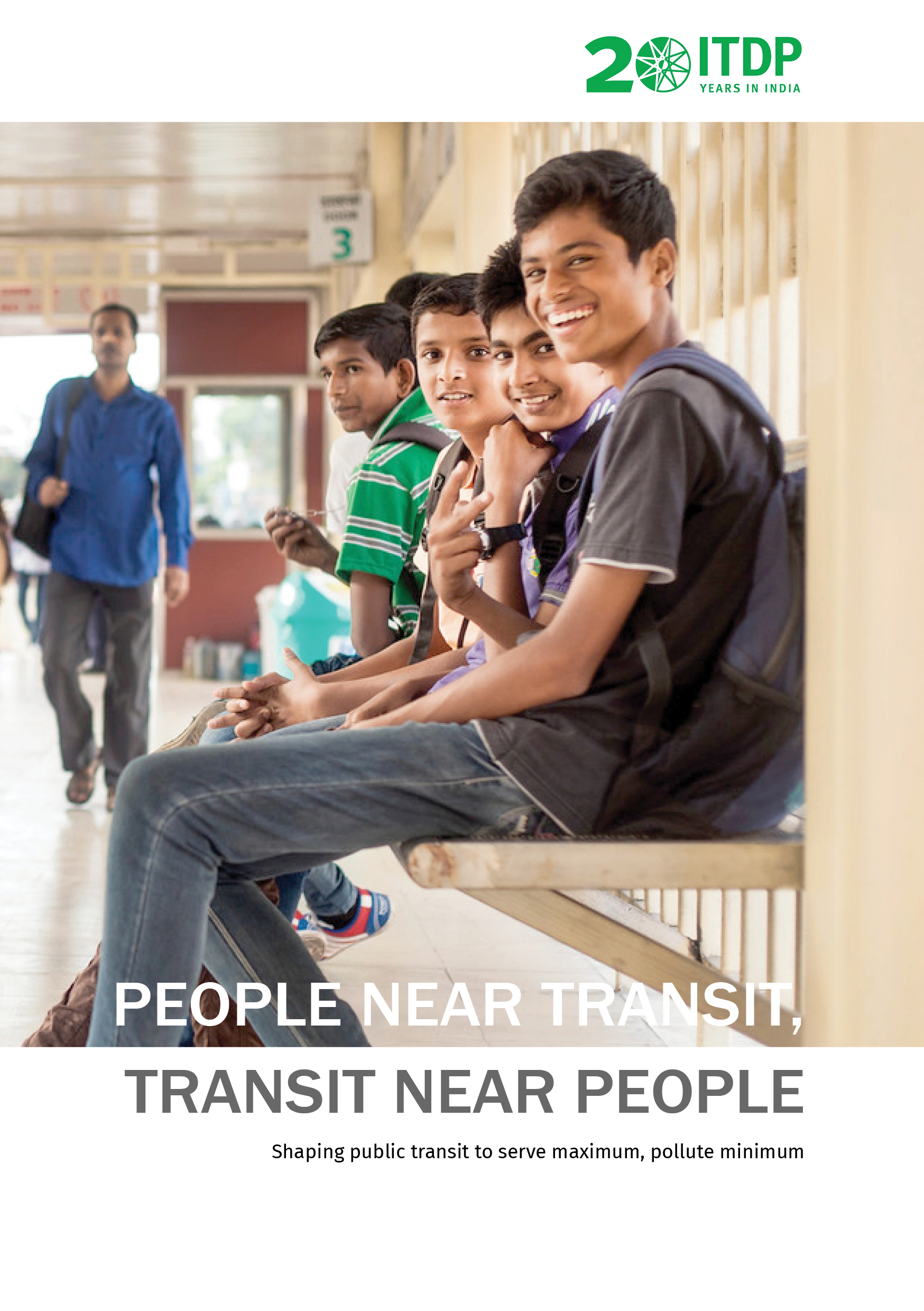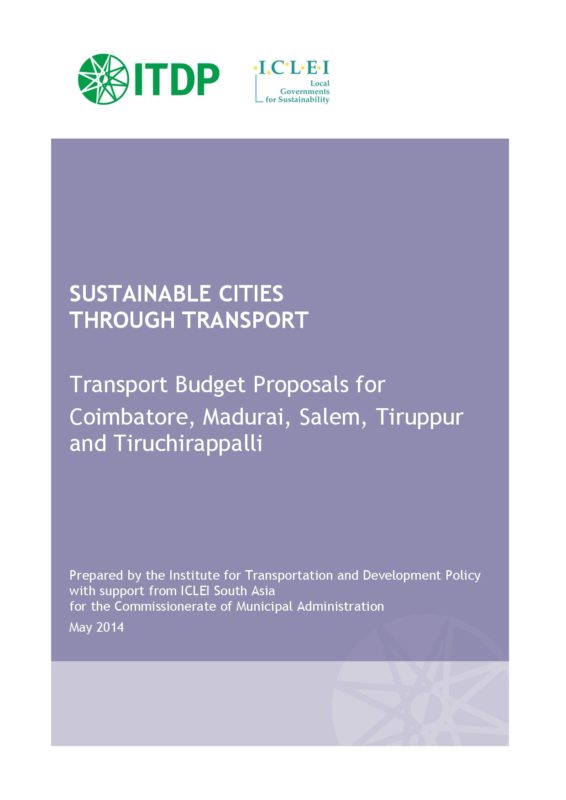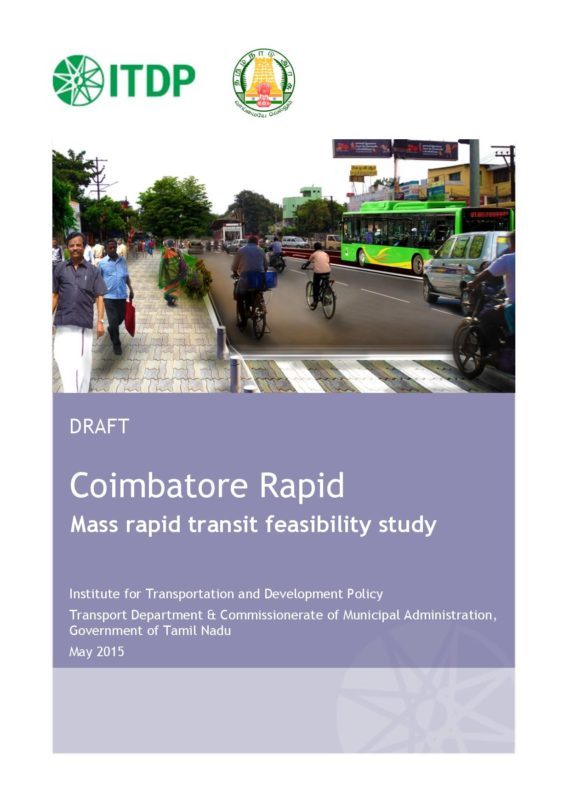The People Near Transit (PNT) report establishes the levels of urban transit services in Pune Metropolitan Region and the accessibility gaps that affects its residents.

by
The People Near Transit (PNT) report establishes the levels of urban transit services in Pune Metropolitan Region and the accessibility gaps that affects its residents.

ITDP India Programme is part of the H8 Committee on Urban Roads and Streets, that was constituted in the year 2015 to prepare street design guidelines for urban roads.
Watch the ITDP team talk about:
The webinar recording can be found here.

About the speaker: Dr Ravikant Joshi – Team Leader -Technical Support Unit to the National Urban Livelihoods Mission – Ministry of Housing and Urban Affairs
Dr. Ravikant Joshi presently works for the Ministry of Housing and Urban Affairs as a Team Leader in the Technical Support Group to National Urban Livelihood Mission. He is the former Chief Accounts Officer of Vadodara Municipal Corporation with more than 35 years of experience. He has been responsible for the conceptualisation, design and implementation of Municipal Financial, Budgetary and Accounting System Reforms at the Corporation.
He is a sought-after guest lecturer at various Institution and Universities for topics ranging from urban-municipal finance, urban finance, urban governance, strategic urban management, to urban development studies. Dr Joshi has written over 30 research papers on urban governance that have been publish in various journals and seminars.
Description: The webinar explores alternate methods of financing sustainable transport initiatives in Indian cities – such as municipal bonds, urban transport funds, land value capture through public-private partnerships etc. It highlights the present scenario of revenue tools, identifies gaps in the current set-up, and provides an analysis of various alternative methods of financing, available for our cities.
The webinar recording can be found here.

About the speaker: Harshad Abhyankar-Specialist Mobility Planning, ITDP India
The Strategic Mobility Planning (SMP) Toolkit was prepared by ITDP India as a step-by-step planning tool to assist cities prepare an SMP. An SMP provides the blueprint to create an urban transport system that addresses mobility needs of people in cities. The Toolkit helps identify the transport challenges within a city, and lays out a strategic roadmap of how conditions can be transformed if a city adopts a sustainable transport approach.
The webinar recording can be found here.

Large cities of the world require strong coverage of rapid transit networks to ensure they remain competitive, and that local communities have a healthy environment, vibrant urban economy, and an equitable, high quality of life for all residents. Many cities—especially those with growing populations, incomes, and/or large infrastructure deficits—have not, however, built rapid transit at the scale and rate needed to meet mobility needs. This paper is Part 2 in a series of research papers that explores how countries can grow their rapid transit infrastructure.
Growing Rapid Transit Infrastructure: Funding, Financing, and Capacity, analyzes how the funding practices, financing practices, and institutional capacity impact a country’s ability to deliver rapid transit effectively. While the paper draws on the rapid transit database used in Part 1, it also uses an additional database compiled by ITDP with complete funding and financing details for 123 urban rapid transport projects, as well as data on urban transport capacity. To understand which countries are the most successful at growing their rapid transit relative to their urban populations, the paper focuses on the annual change in a country’s RTR, looking specifically at the period from 2000 to 2014. Countries are then evaluated according to this metric.

Part 1: Evaluating Country Performance in Meeting the Transit Needs of Urban Populations
With the world’s urban population projected to increase from 3.4 to 6.4 billion between now and 2050, the sustainability of the earth will depend on these new urban residents living as sustainably as possible. One key element of this will be making sure the majority of these new urban residents can live well without depending on the use of the private automobile. Success in large measure will depend on whether the expansion of urban mass transit systems will be able to keep pace with this rapidly growing urban population. Many innovative cities have, on their own initiative, brought about significant long term shifts away from private car use. Overall, however, cities have not expanded their mass transit infrastructure at a pace sufficient to meet the growing needs of their new urban residents, or to stem the risk of irreversible climate change.
In a few countries, like Colombia and Mexico, national governments have played an important role making sure that cities have the financing and technical assistance they need to meet their growing mobility challenges.This paper explores where, whether, and how cities have obtained sufficient help from their national governments to meet their growing urban mobility challenges. With the growing risk of permanent damage to the earth from climate change, it has become imperative to figure out whether there is a role for national governments, and then what that role is, in scaling up municipal level successes to achieve national level changes in urban mobility patterns.

This report was produced by ITDP for Living Cities and is reprinted here with permission. More information is available at LivingCities.org.
Shared-mobility programs like bike-share and car-share have significant potential to benefit low-income users, yet often do not reach that population. This report explores the specific opportunities and challenges facing shared mobility programs in expanding services to low-income communities.
In the last decade, shared mobility services such as bike-share, car-share and ride-share have taken off across the United States as a complement to local public transit and an alternative to private car ownership. As these models have developed, many have explored how the emerging field can more directly benefit low-income individuals, who often face longer and more costly travel times. However, current usage of shared mobility systems among low-income communities remains lower than usage by the general population overall.
This report is a survey of existing shared mobility strategies and their attempt to expand services to low-income individuals. It is our hope that the findings can inform operators, government agencies, funders, non-profit organizations and others as they try to tap into the potential of shared mobility strategies to improve the lives of low-income individuals.

The Chennai Corporation’s Council adopted a progressive non-motorised policy in October 2014 to make walking and cycling its priority. The policy aims to arrest the current decline in walking and cycling in the city by creating safe and pleasant network of footpaths, cycle tracks, greenways and other NMT facilities. Walking and cycling infrastructure—that until recently was at best an afterthought—will now take centrestage. The policy mandates that a minimum of 60 percent of the Corporation’s transport budget is allocated to construct and maintain NMT infrastructure—a clear demonstration of the Corporation’s commitment to creating safe streets that consider the needs of all users.
The city has set for itself ambitious goals: by 2018, build safe and continuous footpaths on at least 80% of all streets, increase the share of walking and cycling trips to over 40%, and, most significantly, eliminate pedestrian and cyclist deaths. The Corporation aims to achieve these goals by mandating various measures through this policy.
Download the policy here.

The cities of Tamil Nadu are witnessing rapid motorisation, along with increased congestion and pollution. Public transport service is often unreliable, infrequent, and inadequate to meet demand, resulting peak-hour overcrowding and a shift toward informal paratransit services. Walking and cycling are critical modes for many urban residents in Tamil Nadu, providing essential low-cost mobility. However, dedicated pedestrian and cycle facilities are almost non-existent in most cities.
To address these mobility challenges, the Commissionerate of Municipal Administration (CMA) launched Sustainable Cities through Transport, a planning process to develop municipal transport budgets for five of the largest city corporations in Tamil Nadu after Chennai including Coimbatore, Madurai, Tiruchirappalli, Tiruppur, and Salem.
The process was organised in partnership with the Institute for Transportation and Development Policy (ITDP) and with support from ICLEI–SA South Asia, adequately facilitated by inputs from municipal teams in the cities involved. The process sought to identify ways to provide safe, affordable, quick, comfortable, and reliable access for the growing number of city residents. In harmony with the 2006 National Urban Transport Policy, the process seeks out to achieve a more equitable allocation of road space by incorporating a focus on sustainable transport in the planning and budgeting stages.

Coimbatore is a prominent industrial hub and second largest city in the state of Tamil Nadu. The city has been witnessing rapid growth of vehicles especially cars and two wheelers. Due to the high vehicle volumes, there is significant traffic congestion in the inner city. Though walking and cycling account for a quarter of trips in Coimbatore, most streets lack dedicated pedestrian and cycling facilities. Even where footpaths are available, they are either narrow or encroached by utilities and parked vehicles.
The existing public transport system served by TNSTC does not have adequate good quality buses and is characterised by poor frequency, longer waiting times, and poor quality bus shelters. To actively promote safe and accessible sustainable transport with focus on reducing vehicular increase and pollution, the Commissionerate of Municipal Administration, Tamil Nadu, in partnership with ITDP has initiated the “Sustainable Cities through Transport” process.
In partnership with the Transport Department, ITDP has worked with Coimbatore to study the city’s public transport needs in more detail. The outcome is this feasibility study, which identifies a 74 km network for rapid transit. This document discusses the existing transportation system challenges, and identifies four corridors to implement an affordable, accessible, flexible, and cost effective mass rapid transit system.